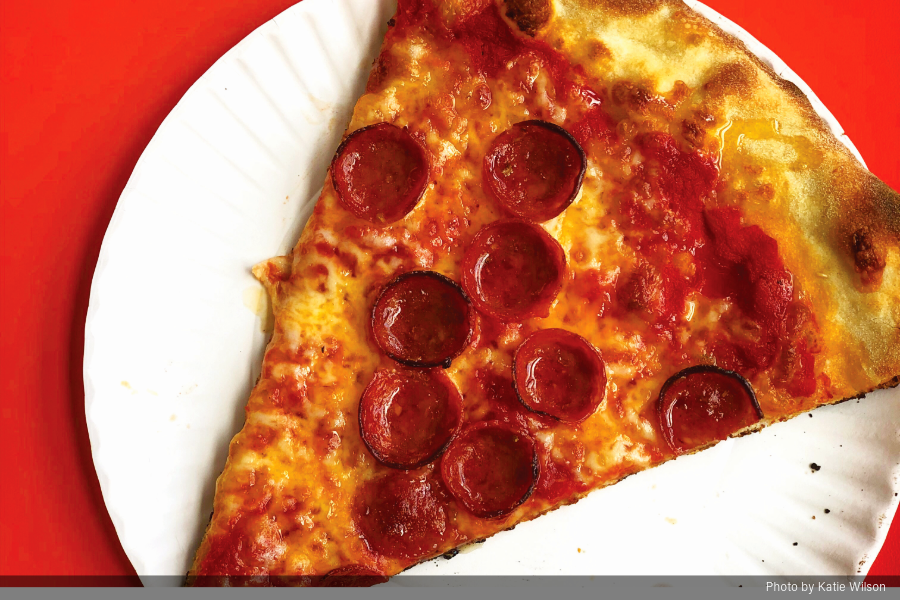Get to know old-school and new-school New York-style pizza
New York, New York, it’s a helluva town! I recently attended a conference for the hospitality industry, and one of the questions I heard was, “What is New York cuisine?” Of course, there were a multitude of answers that included every culture that ultimately pinned New York cuisine as a melting pot.
All of this is true. But if you were to ask anyone on the street, “What’s the first food you think of when you think of New York?” I’m betting the answer would most likely be PIZZA – and a slice at that. How do you define New York pizza? This question for the ages is continuously evolving.
Pizza in New York is so varied. Just like New York cuisine is a blend of different cultures, New York is a city where you can find almost every type of pizza from thin and crispy to soft and pillowy to every pan style you can think of and everything in between.
But the New York slice is one that defines the New York pizza scene.
Even the slice is extremely varied. For the “old-school” slice that is cheap and quick, you’ll find recipes that contain lower hydrations in the mid- to high-50 percentiles and flours that range in protein contents but hover around 13.5-14.5 percent. When talking about New York style pizza, the flour I most commonly hear about is always the bromated variety. It is a high-protein, high-gluten flour; bromate is an additive that helps soften the dough, which makes it easy to stretch. Bromate is outlawed in some states because it has been found to cause cancer in certain quantities. If you are looking for it, be advised to check the bags.
If you talk to some of the old-school pizza shops, they might mention using eggs or milk in their pizza dough, but it is not a common practice these days – especially since the cost of dairy and eggs has risen so much recently. Since classic New York pizza is cooked in a gas deck oven, we are looking at lower cook temperatures. Some doughs may have a small amount of sugar added, but not all pizzerias use it. Flour naturally has some sugar present, so it isn’t always needed as an additional ingredient. Oil is another ingredient you may or may not hear about being used, as it is an additional cost that isn’t always needed. Remember, a lot of OG pizzerias started in New York came from bread backgrounds, so original recipes are going to carry certain similarities to bread, which normally do not contain fats, aside from focaccia.
For the toppings, ingredients normally are simple and to the point. A slice of plain (aka plain cheese) is probably ordered most frequently, and it hits the spot every time.
For the “new-school” slice, I’m seeing blended flours
– small percentages of fresh milled flour – various kinds of mozzarella and cheeses, and ingredients that would be considered a little more outside the box, showing the influence of different cultures. Dough recipes are evolving with higher hydrations, inclusion of preferments and the blending of techniques that come from bread but also blending different pizza styles to create new hybrids.
With the advancement of oven technology, electric ovens have really taken off in the pizza scene. Nowadays, it is common to find an electric oven in a slice shop, whether alongside a gas oven or by itself. Electric ovens can reach higher temperatures and even have steam capability, which has really changed the game for pizza. Ultimately, whether “old school” or “new school,” the quintessential triangular slice should be folded when eaten and crack but not break.
Today’s New York slice is not solely triangular. Although this is the slice most associated with New York pizza, let us not forget about the square. Squares always have been found in New York, and you can find them at places like Prince Street for the old school and Mama’s Too for the new-school Sicilian square slice. You also may find it named sfincione, but this is specific to the toppings, which include tomato, breadcrumbs, anchovies and pecorino cheese. Delicious!
At the end of the day, I am a proud Bay Area Californian who’s been making pizza for almost 20 years. I am not a New Yorker, nor would I ever claim to be. If you want to know the nitty gritty, I recommend reaching out to someone like Scott Wiener, owner of Scott’s Pizza Tours, who can literally school you on the history and evolution of pizza in New York. Bring a notebook!
Here is an Old-school New York Pizza Dough Formula:
100% high-protein, high-gluten flour
55%-58% water
0.25% instant yeast
2% salt
1%-2% olive oil
Here is a New School New York Pizza Dough Formula:
100% flour
10%-20% Biga or Poolish starter
65%-68% water
0.05% instant yeast
2% oil
2%-2.5% salt
Laura Meyer is the owner of Pizzeria da Laura in Berkeley, California.



